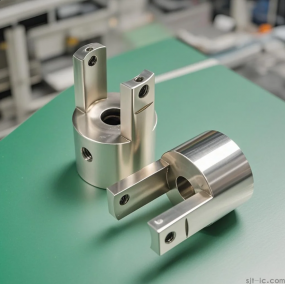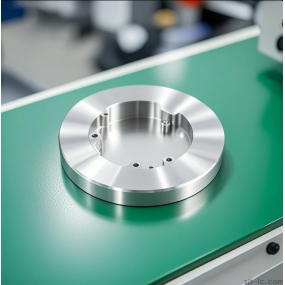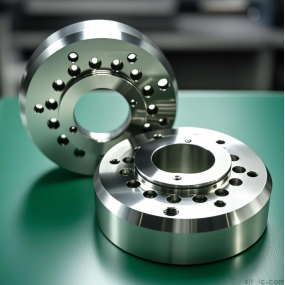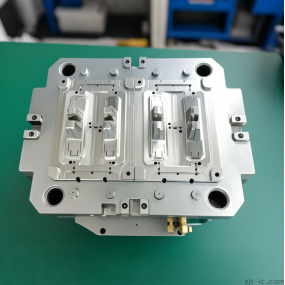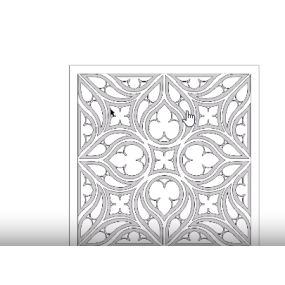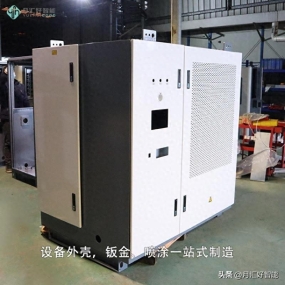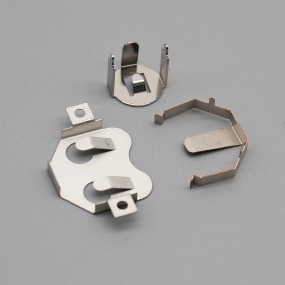With the continuous advancement of technology, the mechanical parts processing industry is also constantly developing. The precision control of mechanical parts processing is a key link to ensure that the parts meet the design requirements. The following are several main methods for controlling the machining accuracy of mechanical parts: 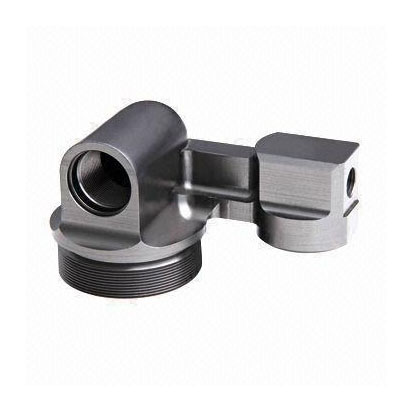 1. Tolerance fit definition: By setting a reasonable tolerance range, it ensures that the parts can fit together during assembly to achieve the expected accuracy requirements. Function: Tolerance fit is an important means of controlling the dimensional accuracy of parts. It allows the dimensions of parts to fluctuate within a certain range, but still ensures the overall accuracy after assembly. 2、 Definition of Geometric Tolerance Control: Geometric tolerances include parallelism, perpendicularity, coaxiality, etc. By precisely controlling these geometric tolerances, the accuracy of the product can be improved. Method: High precision measuring tools and methods are used to accurately measure and adjust the form and position tolerances of the parts, ensuring that the shape and position accuracy of the parts meet the design requirements. 3、 Definition of surface roughness control: The roughness of the part surface has a significant impact on accuracy. Method: By selecting appropriate machining methods and parameters such as cutting speed, feed rate, cutting depth, etc., surface roughness can be controlled to improve accuracy. In addition, subsequent processing techniques such as grinding and polishing can be used to further reduce surface roughness. 4、 The importance of using high-precision machining equipment: The use of high-precision machine tools and cutting tools is the key to ensuring machining accuracy. Equipment: High precision machining equipment such as CNC lathes, CNC milling machines, grinders, etc., can achieve high-precision cutting and processing, thereby improving the accuracy of parts. 5、 Definition of process control: Reasonably arranging the processing sequence, avoiding deformation and error accumulation during the processing, is also an important means to improve accuracy. Method: By optimizing the process flow, selecting appropriate machining methods and parameters, and controlling factors such as temperature and vibration during the machining process, the stability and improvement of machining accuracy can be ensured. 6、 The importance of measurement and inspection: Using precision measuring tools to measure and inspect parts during and after processing is a key step in ensuring that parts meet accuracy requirements. Tools: Common measuring tools include micrometers, vernier calipers, microscopes, coordinate measuring machines, etc. 7、 Temperature control impact: During the machining process, temperature changes can affect the properties and dimensions of materials, thereby affecting machining accuracy. Method: To reduce the impact of temperature on machining accuracy, measures such as controlling the temperature of the machining environment and using coolant are taken. 8、 Special methods and techniques for trial cutting: Obtaining specified dimensional accuracy through a repeated process of "trial cutting measurement adjustment trial cutting", suitable for single piece production. Adjustment method: First adjust the relative position of the tool and workpiece on the machine tool, and keep it unchanged during the processing of a batch of parts, suitable for batch and mass production. Automatic control method: a series of tasks such as measurement, compensation, adjustment, and cutting are automatically completed during the machining process, such as CNC machine tool machining or machining center machining, with stable quality and high productivity.
1. Tolerance fit definition: By setting a reasonable tolerance range, it ensures that the parts can fit together during assembly to achieve the expected accuracy requirements. Function: Tolerance fit is an important means of controlling the dimensional accuracy of parts. It allows the dimensions of parts to fluctuate within a certain range, but still ensures the overall accuracy after assembly. 2、 Definition of Geometric Tolerance Control: Geometric tolerances include parallelism, perpendicularity, coaxiality, etc. By precisely controlling these geometric tolerances, the accuracy of the product can be improved. Method: High precision measuring tools and methods are used to accurately measure and adjust the form and position tolerances of the parts, ensuring that the shape and position accuracy of the parts meet the design requirements. 3、 Definition of surface roughness control: The roughness of the part surface has a significant impact on accuracy. Method: By selecting appropriate machining methods and parameters such as cutting speed, feed rate, cutting depth, etc., surface roughness can be controlled to improve accuracy. In addition, subsequent processing techniques such as grinding and polishing can be used to further reduce surface roughness. 4、 The importance of using high-precision machining equipment: The use of high-precision machine tools and cutting tools is the key to ensuring machining accuracy. Equipment: High precision machining equipment such as CNC lathes, CNC milling machines, grinders, etc., can achieve high-precision cutting and processing, thereby improving the accuracy of parts. 5、 Definition of process control: Reasonably arranging the processing sequence, avoiding deformation and error accumulation during the processing, is also an important means to improve accuracy. Method: By optimizing the process flow, selecting appropriate machining methods and parameters, and controlling factors such as temperature and vibration during the machining process, the stability and improvement of machining accuracy can be ensured. 6、 The importance of measurement and inspection: Using precision measuring tools to measure and inspect parts during and after processing is a key step in ensuring that parts meet accuracy requirements. Tools: Common measuring tools include micrometers, vernier calipers, microscopes, coordinate measuring machines, etc. 7、 Temperature control impact: During the machining process, temperature changes can affect the properties and dimensions of materials, thereby affecting machining accuracy. Method: To reduce the impact of temperature on machining accuracy, measures such as controlling the temperature of the machining environment and using coolant are taken. 8、 Special methods and techniques for trial cutting: Obtaining specified dimensional accuracy through a repeated process of "trial cutting measurement adjustment trial cutting", suitable for single piece production. Adjustment method: First adjust the relative position of the tool and workpiece on the machine tool, and keep it unchanged during the processing of a batch of parts, suitable for batch and mass production. Automatic control method: a series of tasks such as measurement, compensation, adjustment, and cutting are automatically completed during the machining process, such as CNC machine tool machining or machining center machining, with stable quality and high productivity.
Hello! Welcome to EMAR's website!
 English
English » »
» »
 Spanish
Spanish Arabic
Arabic French
French Portuguese
Portuguese Belarusian
Belarusian Japanese
Japanese Russian
Russian Malay
Malay Icelandic
Icelandic Bulgarian
Bulgarian Azerbaijani
Azerbaijani Estonian
Estonian Irish
Irish Polish
Polish Persian
Persian Boolean
Boolean Danish
Danish German
German Filipino
Filipino Finnish
Finnish Korean
Korean Dutch
Dutch Galician
Galician Catalan
Catalan Czech
Czech Croatian
Croatian Latin
Latin Latvian
Latvian Romanian
Romanian Maltese
Maltese Macedonian
Macedonian Norwegian
Norwegian Swedish
Swedish Serbian
Serbian Slovak
Slovak Slovenian
Slovenian Swahili
Swahili Thai
Thai Turkish
Turkish Welsh
Welsh Urdu
Urdu Ukrainian
Ukrainian Greek
Greek Hungarian
Hungarian Italian
Italian Yiddish
Yiddish Indonesian
Indonesian Vietnamese
Vietnamese Haitian Creole
Haitian Creole Spanish Basque
Spanish Basque


